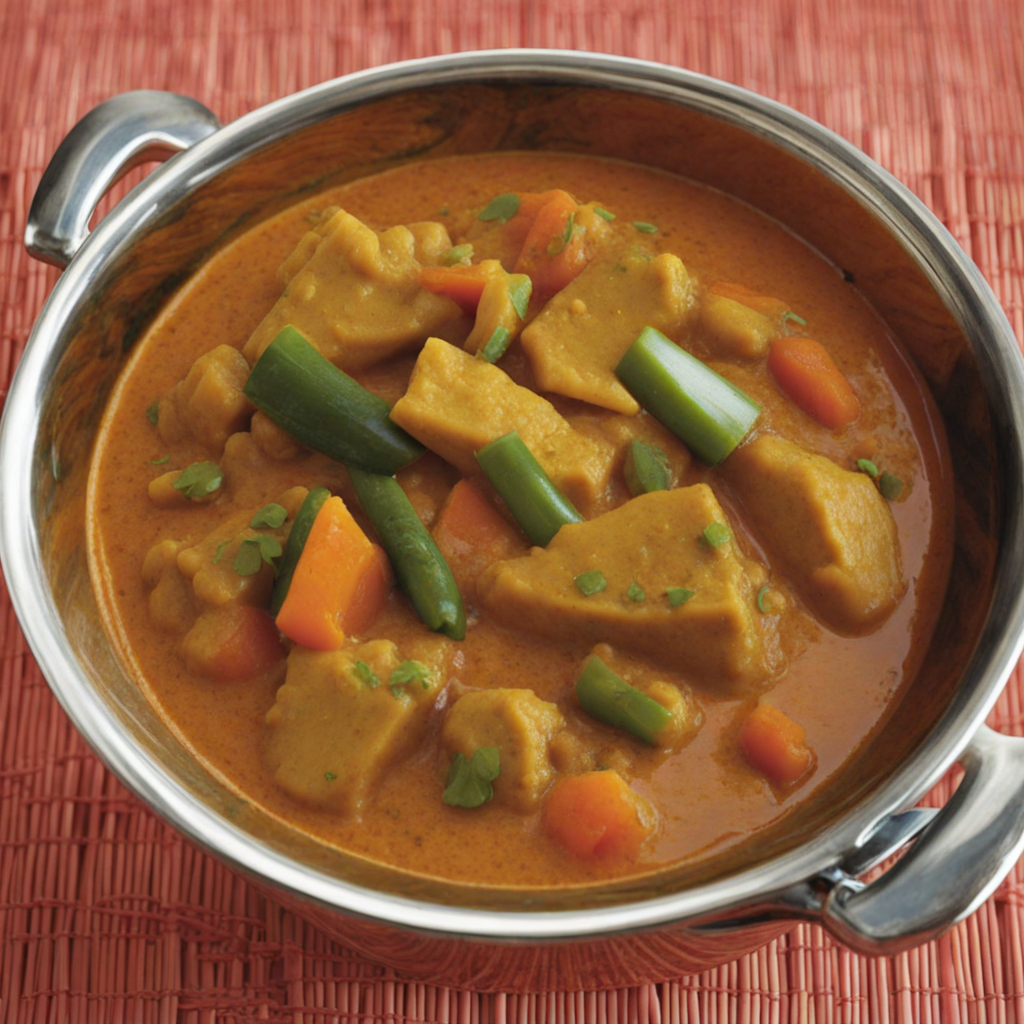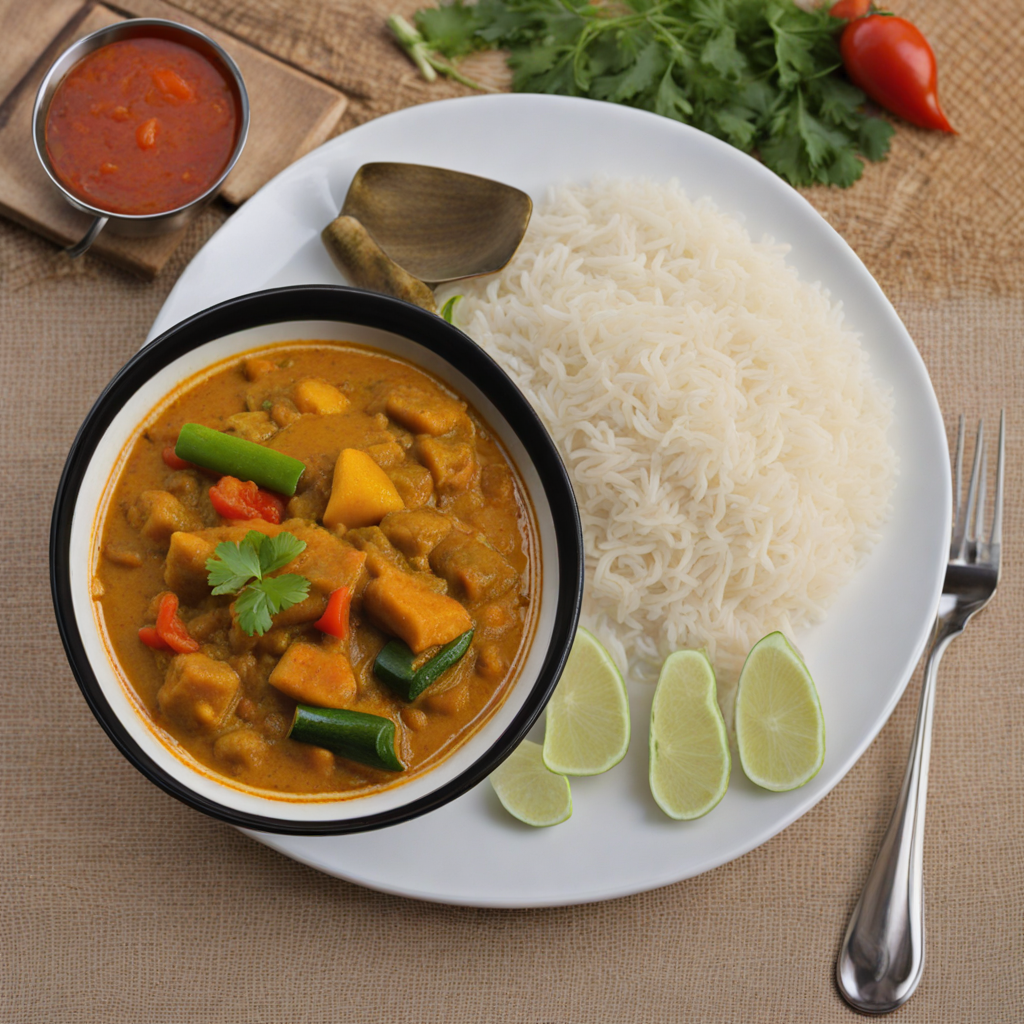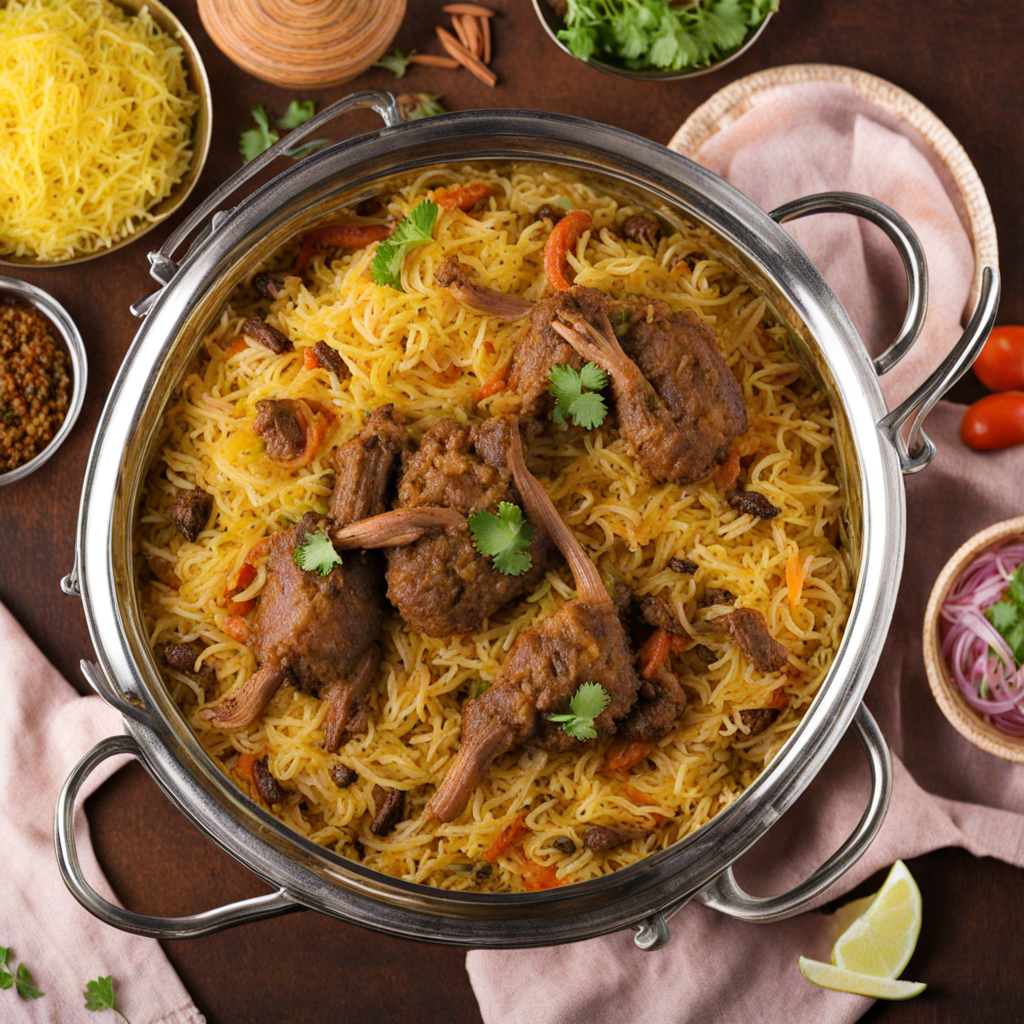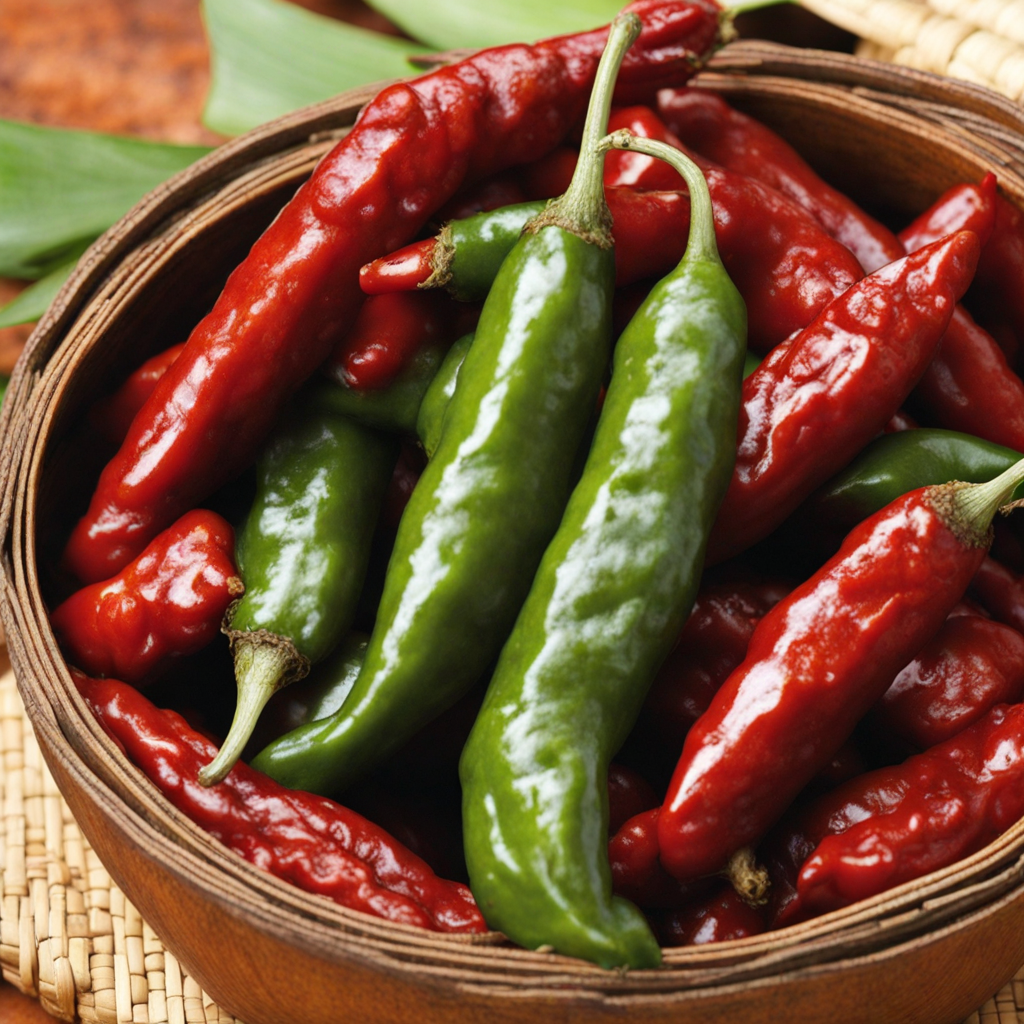Vegetable Curry
Vegetable Curry from Mauritius is a vibrant and aromatic dish that showcases the island's rich culinary heritage, influenced by Indian, Creole, and Chinese cuisines. The base of this curry is typically made from a medley of seasonal vegetables such as eggplant, potatoes, carrots, and green beans, all simmered to perfection in a fragrant blend of spices. The use of turmeric, cumin, coriander, and garam masala imparts a warm, earthy flavor, while fresh herbs like cilantro and curry leaves add a burst of freshness to each bite. The preparation involves sautéing onions and garlic until they become golden and aromatic, forming the backbone of the curry's flavor profile. Tomatoes are then added for acidity and sweetness, along with a splash of coconut milk or water to create a rich, creamy sauce. The vegetables are gently cooked until tender, allowing them to absorb the spices, creating a harmonious balance of flavors that is both comforting and satisfying. This dish is often enjoyed with steamed rice or flatbreads, making it a wholesome and fulfilling meal. What sets Mauritius Vegetable Curry apart is its versatility; it can be customized to include any variety of vegetables or even legumes, making it a perfect choice for vegetarians and vegans. Each serving is typically garnished with a sprinkle of fresh cilantro and a squeeze of lime, enhancing the dish's brightness and elevating the overall taste experience. As you explore this culinary delight, you'll discover a tapestry of flavors that reflect the island's diverse culture, making it a must-try for anyone looking to expand their palate.
How It Became This Dish
The History of Kari Legim: A Culinary Gem of Mauritius Kari Legim, a beloved dish in Mauritian cuisine, is a vibrant and flavorful vegetable curry that encapsulates the island’s rich history and cultural diversity. Its origin and evolution reflect the melting pot of influences that have shaped Mauritius, from indigenous practices and colonial rule to the waves of immigration that have introduced new flavors and culinary techniques. #### Origins: A Cultural Mosaic Mauritius, an island nation located in the Indian Ocean, has a history that is as complex as its culinary landscape. The island was first inhabited by the Dutch in the 17th century, but it was the French and later the British who significantly influenced its cultural and culinary identity. The arrival of East African slaves, Indian indentured laborers, and Chinese immigrants contributed to a vibrant exchange of traditions, flavors, and ingredients. Kari Legim is rooted in the Indian tradition of curries, which were brought to Mauritius by Indian laborers in the 19th century. These laborers, primarily from the Indian states of Tamil Nadu and Gujarat, not only introduced their culinary practices but also brought with them a rich tapestry of spices and herbs. The word "Kari" itself is derived from the Tamil word "kari," meaning "to eat," and refers to a spiced dish. The term "Legim," which means "vegetable" in Mauritian Creole, reflects the dish's core ingredient. Kari Legim is made with a variety of vegetables, often including eggplant, potatoes, carrots, and green beans, simmered in a fragrant blend of spices. This use of vegetables signifies the island’s agricultural bounty and the influence of vegetarian cuisine, particularly from Indian traditions. #### Cultural Significance Kari Legim is more than just a dish; it is a symbol of Mauritian identity and a representation of the island's multicultural heritage. The blending of Indian, Chinese, African, and Creole influences is evident in the preparation and presentation of the dish. It is often enjoyed with rice, a staple food in Mauritian households, and is typically accompanied by pickles, chutneys, and a side of lentils, known as "dal." In Mauritian culture, food plays a central role in social gatherings, religious celebrations, and family traditions. Kari Legim is a common feature at festive occasions, such as Diwali, where it is served alongside other traditional dishes, showcasing the diversity of Mauritian cuisine. The dish is also a staple in everyday meals, reflecting the local preference for home-cooked, hearty meals that bring families together. The preparation of Kari Legim can vary from household to household, with each cook imparting their own unique touch—be it a special blend of spices or a particular cooking technique. This variation highlights the importance of family recipes and traditions that have been passed down through generations, making Kari Legim an essential part of the Mauritian culinary heritage. #### Evolution Through Time As Mauritius entered the 20th century and beyond, the culinary landscape continued to evolve, influenced by global trends, migration patterns, and the rise of tourism. The island's diverse population embraced new ingredients and cooking methods, leading to a fusion of flavors that further enriched traditional dishes like Kari Legim. With increasing globalization, the accessibility of spices and fresh produce allowed for experimentation and creativity in the kitchen. Chefs began to incorporate not only local ingredients but also international influences into their versions of Kari Legim. This adaptability reflects the Mauritian spirit of embracing change while honoring tradition. The rise of the tourism industry in the late 20th century also played a pivotal role in the evolution of Kari Legim. As visitors flocked to the island, local chefs started to showcase traditional Mauritian dishes, including Kari Legim, on a global stage. This newfound attention led to an appreciation of the dish beyond Mauritian borders, with tourists often seeking out authentic local experiences centered around food. In recent years, there has been a resurgence of interest in plant-based diets and sustainable eating practices. Kari Legim, being predominantly a vegetable dish, fits perfectly within this trend. Many Mauritians and visitors alike are now rediscovering the health benefits of incorporating more vegetables into their diets, and Kari Legim has emerged as a popular option in both home kitchens and restaurants. #### Modern Interpretations and Global Recognition Today, Kari Legim is celebrated not only in Mauritius but also in various parts of the world, especially in regions with significant Mauritian diasporas. Mauritian restaurants have begun to pop up in cities across Europe, Australia, and North America, offering a taste of the island's rich culinary heritage. In these settings, chefs often present Kari Legim with a contemporary twist, incorporating seasonal ingredients or innovative cooking techniques while still honoring the traditional flavors. Social media has played a significant role in popularizing Kari Legim among food enthusiasts and home cooks. Platforms like Instagram and TikTok have allowed people to share their culinary creations, showcasing the vibrant colors and enticing aromas of this beloved dish. The visual appeal of Kari Legim, with its medley of vegetables and spices, has captured the attention of food lovers, further solidifying its place in the global culinary scene. #### Conclusion: A Dish of Unity and Diversity In essence, Kari Legim serves as a delicious testament to the rich history and cultural diversity of Mauritius. It embodies the island’s collective memories, stories, and traditions, passed down through generations. As a dish that brings people together—whether at family gatherings, festive celebrations, or in restaurants—the spirit of Kari Legim reflects the unity and diversity that characterize Mauritian society. As we continue to explore and celebrate the culinary heritage of Mauritius, Kari Legim remains a cornerstone of this rich tapestry, inviting us to savor not just its flavors, but also the history and culture that it represents. Through every spoonful, we taste the stories of the island, creating a bridge between the past and the present, while looking forward to a future where this culinary gem continues to thrive.
You may like
Discover local flavors from Mauritius







